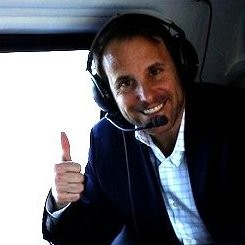1Mby1M Virtual Accelerator Investor Forum: With Jason Lemkin of Storm Ventures (Part 1)

Responding to a popular request, we are now sharing transcripts of our investor podcast interviews in this new series. The following interview with Jason Lemkin was recorded in October 2014.
Jason Lemkin, prior to becoming a VC, was the CEO of EchoSign, a digital signature SaaS vendor that Adobe acquired some years back. This was an excellent discussion and offers very concrete pointers to where you might look for white spaces in the cloud computing space to do new ventures.
Sramana Mitra: Let’s start with a small window into how you look back your journey as an entrepreneur. Let’s start with EchoSign now that you have so much experience behind you and you’ve had a chance to consider the cloud landscape from a VC’s point of view.
What are your thoughts looking back on EchoSign on what you did right? What did you do right? What can you pass on to the entrepreneurs who are potentially working on cloud ventures now?
Jason Lemkin: If I had to look back on a single thing that I might have understood quantitatively but did not truly understand inside was what it means for these recurring revenue models to compound. This is key. You built some sort of web or mobile service that you charge $5 a month for. You get your first 10 customers. It’s so exciting. You’re doing $50 a month. I don’t care where you are in the world, but $50 a month is not enough. It just doesn’t work.
For these recurring revenue models, the bad news is it can be really hard to get that engine going. It can be really hard to get the wheels going. What I didn’t realize is how it goes in phases. I’ve since then named these phases now that I looked back on it. There are two key ones. The first one is called initial traction. I’ve now met with a hundred SaaS companies and they all hit this moment at the same time. It’s typically a little past that million point.
At $1.5 million, you have a truly repeatable business process and the first engine that builds on top of itself. Usually, when you get to $1.5 million, you’ve got a hundred or a thousand customers. They start talking about you. The word-of-mouth starts happening. The upgrade starts happening.
Perhaps most importantly – I wish I knew this back in time – you get a mini-brand. The mini-brand that everybody on this webinar has heard of you. What it tends to mean is that the amongst handful of customers that you might get, a lot of them start to hear about you.
My learning is do whatever it takes, humanly possible, to get your business to $1.5 million. It doesn’t really matter how long it takes. Some of us will get there super fast. Some of us will take many years. Once you get there, this recurring model will start to occur. If you get to $1.5 million, you’ll have a mini-brand. You’ll have a recurring growth rate. As long as you get there with some velocity, you’ll get to $10 million. As long as you don’t quit, you’ll get there. This is my learning. Don’t die on the way to $1.5 million in revenue. Don’t let yourself quit on the way to initial traction.
At minimum, make sure you get, at least, sub-2 years to get there. If you don’t commit for two years, you’ll almost certainly won’t get there. Don’t give yourself a year. Don’t give yourself six months or nine months. The last is once you hit that initial traction, all that really matters is building as much as you can – hiring a management team, getting this engine going.
If you get to $1.5 million and you’re growing 100% year over year, you’ll get to $10 million mathematically. The faster you can get to $10 million, it’s far less stressful and a far stronger company that you’ll have. Once you get to that, my number one piece of advice is stop taking out the garbage. Stop doing low ROI things. Stop messing around in sales with things you don’t have to be involved in.
Once you get to $1.5 million, do only medium to high ROI things. These are the things I wish I knew. This is why, operationally if not financially, I sold at the worst possible time you could sell a company. When you get to the eight figures in revenue, you just can’t be killed. As entrepreneurs, we’re always paranoid. We’re always worried about competition and the world changing. That is the kind of time when all this comes together – at $10 million. That’s when the real magic really starts to happen.
This segment is part 1 in the series : 1Mby1M Virtual Accelerator Investor Forum: With Jason Lemkin of Storm Ventures
1 2 3 4
Featured Videos
Can 1M/1M Help Me Raise Money?
How Does 1M/1M Democratize Entrepreneurship Education?
How Does 1M/1M Democratize Management Consulting?
When Is The Right Time To Join 1M/1M?
Can 1M/1M Help Me With Business Development?
Can 1M/1M Help Me With Market Sizing?
Can 1M/1M Help Me Validate My Product?
Will I Have Private 1-on-1 Sessions In 1M/1M?
How Does 1M/1M Help Entrepreneurs Connect With Silicon Valley?
Mentoring or Consulting?
Why Does 1M/1M Charge $1000 a Year?
Why Does 1M/1M Partner With Local Organizations?
Why Don\’t Mentoring Networks Work?
Why Is It Important To Study With 1M/1M Now?
Dan Stewart Story
Vikrant Mathur Story
